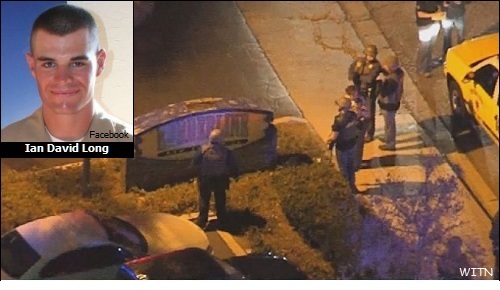
|
|

|
|
| April 20, 2024 |
|
Was the Thousand Oaks killer radicalized? 
THOUSAND OAKS - The suspect in the Nov. 7 shooting at the Borderline Bar & Grill in Thousand Oaks had not been radicalized, but no motive has been determined yet in the incident that led to the death of 12 people, authorities said Tuesday.
At a news conference outside the Ventura County Sheriff's Thousand Oaks station, Sheriff Bill Ayub and other officials provided more details about the massacre to the Ventura Star and other members of the media. Newbury Park resident and former Marine Ian David Long, 28, entered the bar at 99 Rolling Oaks Drive just before 11:20 p.m. and opened fire with a Glock 21, a .45-caliber semi automatic pistol equipped with a high-capacity magazine. Long killed 12 people, including sheriff's Sgt. Ron Helus, and then turned the gun on himself. On Tuesday, Ayub called the scene confusing and chaotic. In the days that followed, FBI investigators worked alongside sheriff's homicide detectives to collect hundreds of pieces of evidence from Borderline and Long's home. "At this point, we have no indication of radicalization but along with the sheriff's department we continue to look to identify any motive," said Paul Delacorte, assistant director of the FBI's Los Angeles field office. He did not elaborate about what sort of influence that might have been. There were rumors that Long went to Borderline to target a girlfriend but Ayub said there was no indication of that in the evidence. Additionally, Long did not have a dispute with the nightclub's owner and was not employed there, Ayub said. Long had previously gone to Borderline as a customer, the sheriff said, but the owner did not know him. Ayub again confirmed previous information released from the Sheriff's Office about investigating posts made to Long's Instagram account. His other social media activity as well as information from family, friends and witnesses at the bar were also being used to get closer to motive, Ayub said. Some digital media from Long was also found, which will be investigated, Delacorte added. Body-camera footage from the incident and surveillance footage has also been recovered, Ayub said. Most of the evidence is being taken to the FBI's lab in Quantico, Virginia to be analyzed, Ayub said. About 80 to 90 FBI investigators were on scene during the eight days they surveyed the crime scene and Long's home, Ayub said. The sheriff also took the opportunity Tuesday morning to clarify some initial reports about the incident which he said captured the ensuing confusion in the early hours of the investigation. There were multiple reports from witnesses early on giving separate descriptions of the suspect, which led to early reports of multiple shooters. The injured people at Borderline also fled to a bar down the street, which led to initial information about two shooting scenes. Ultimately, the shooting happened only at Borderline and Long is the sole suspect. Long legally purchased the handgun used in the shooting in August 2016 from a Simi Valley gun shop. He also had a folding knife in his possession, Ayub said. Long immediately began firing the handgun when he entered the nightclub and also threw smoke bombs. A flashlight and a laser were attached to the handgun, Ayub said. No other weapons were found at the scene or at Long's home, Ayub said. Long also did not have a license to carry a concealed weapon, Ayub said. At the shooting scene, however, Long did have seven, 30-round magazines that are illegal to purchase or possess in California, Ayub said. Five of those magazines were still fully loaded, Ayub said. More than 50 rounds were fired from his gun, Ayub said. Story Date: December 5, 2018
|